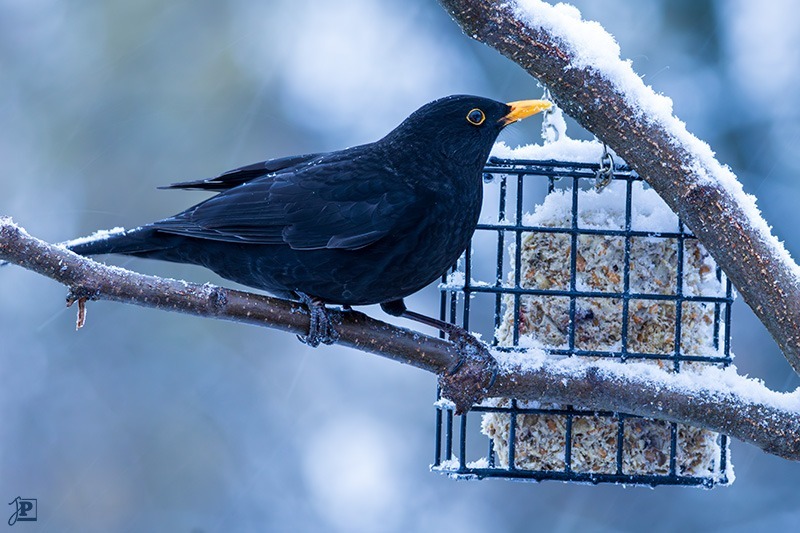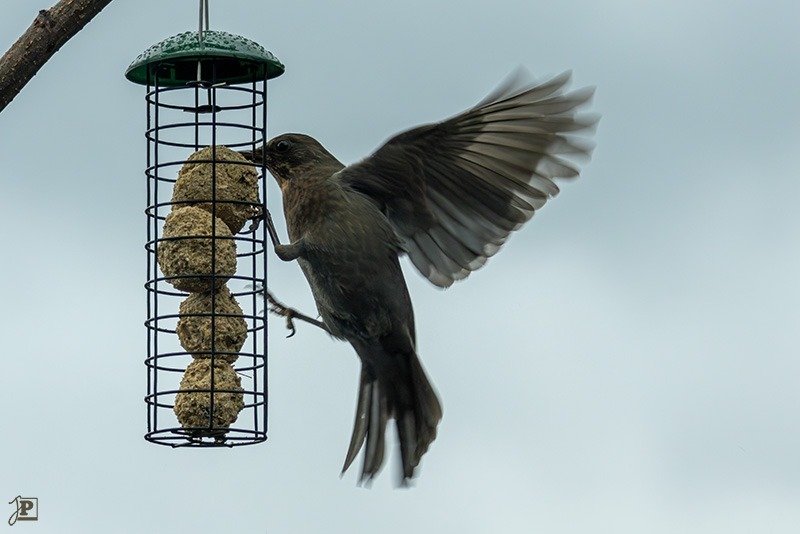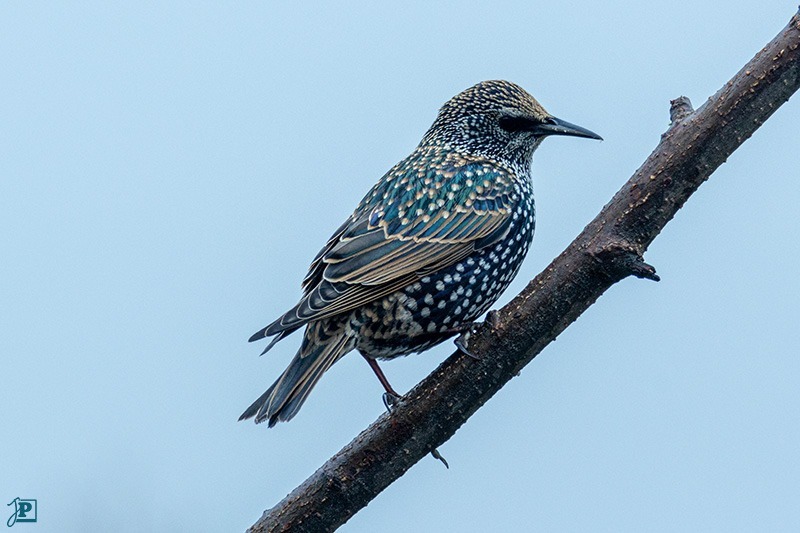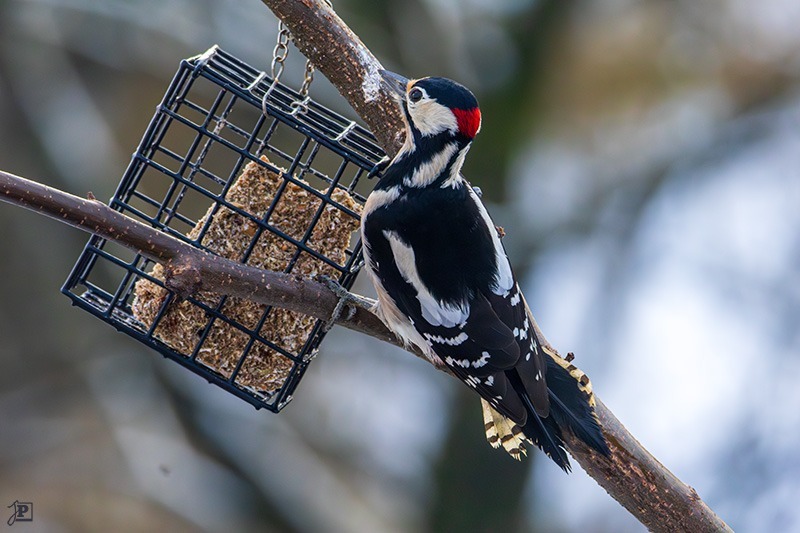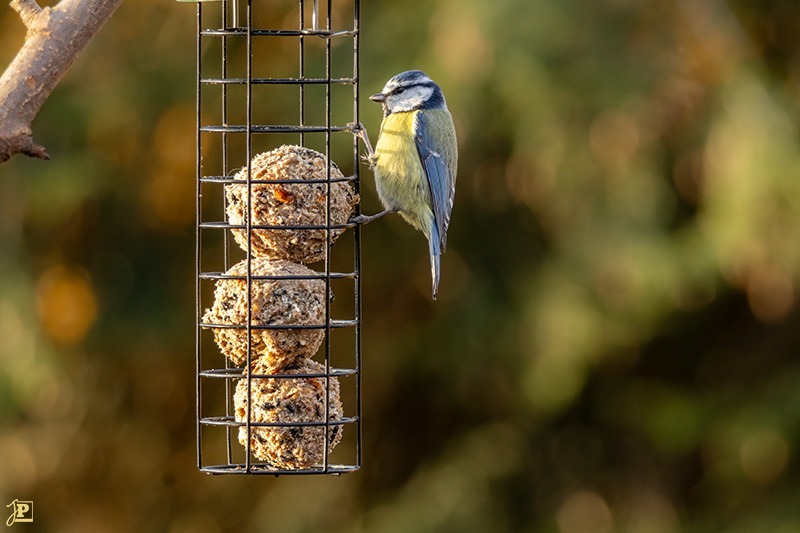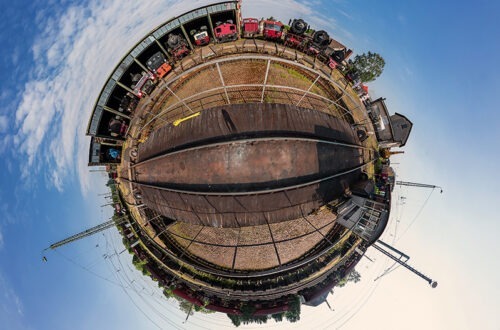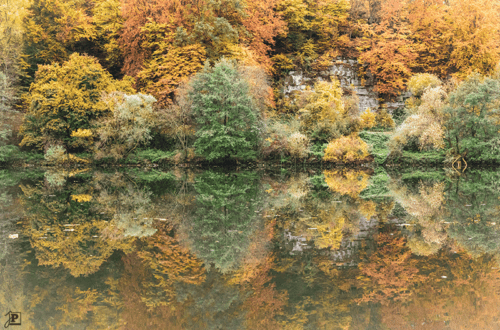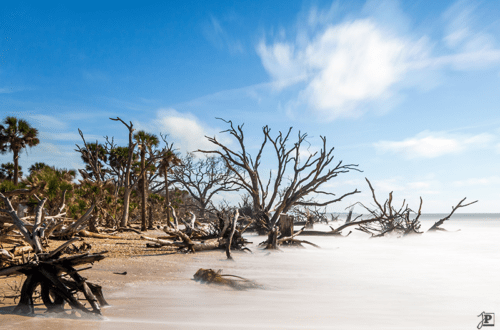Feeding Birds in Winter
Setting up a feeder on your own terrace in winter not only benefits the birds, but also the photographer.
The Idea for a Bird Feeder
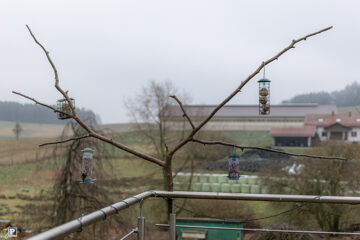
Ever since I bought the new telephoto lens in the summer of 2023, I have become ambitious when it comes to bird photography. Ever since then, I often take along my camera when I’m out and about with our dog, “hunting” for sparrows, tits, blackbirds, and anything else that flutters around. There are a lot of them in our area. But of course it is inconsiderate to stand on the street in front of someone else’s house and then take photos of their garden.
A good friend of mine has a feeder with a built-in camera hanging in his garden, which films the birds as they approach and eat. This gave me the idea of setting up a feeding station at our house, too. However, I wanted to set it up in such a way that I could photograph the birds from a distance and with a suitable background.
So I came up with the idea of fixing a branch to our patio railing and attaching some feeders to it. Chance finally came to my aid when, after an autumn storm, I discovered a tree that had fallen across the forest path during my morning walk with the dog. And one of the branches that was now within reach was perfect for what I had in mind.
So I went out again at midday that same day, with a fully packed photo backpack – it was the ideal day for finding mushrooms in the forest – including a saw. Three hours later, I was back home with hundreds of pictures and a freshly cut branch. I then attached it to the terrace railing with cable ties. The branch had grown in such a way that it branched out in one plane and almost at right angles. This allowed me to place all the feeding stations next to each other without disturbing elements in the picture. And even in this position, the branches are straight enough for the birds to sit on.
It comes to Life
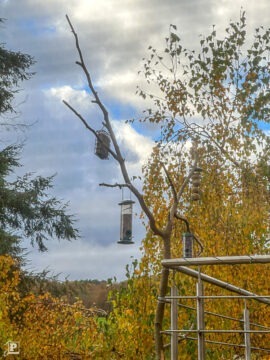
I decided to go with four feeding stations: two with scattered food and two with fat balls, in German also called “tit dumplings”. I deliberately chose feeders without plastic nets, instead using suitable wire holders. Once everything was set up and filled, the waiting began.
However, it didn’t take long for word of the new food source to spread and for life to return to our terrace. The location was chosen so that we could watch the activity from our reading chair through the patio door without disturbing the birds. The distance of around 12 ft. is ideal for capturing the little rascals with a telephoto lens. The comparatively distant garden and the farm on the opposite hill provide a suitable background.
The blackbirds were the first to claim the feeding station for themselves. I have seen up to three pairs of blackbirds on the terrace at the same time. They prefer the cube-shaped ‘bird buffet’ on the left side of the picture. They also like the balls, but can’t land there properly and then perform daredevil tricks to get to the food while half sitting, half flying.
Blue tits can also be seen in groups. In true titmouse fashion, they fly up, take a beakful of food and then fly into the next tree to eat in peace and quiet and then get the next portion. They are real acrobats when they eat, and can sometimes be seen hanging upside down from the food cage.
The starling impressed me with its magnificent plumage. However, it does not tolerate any competition at the feeding station as long as it is there. The great spotted woodpecker is also a regular guest here. As it knocks the food out of the feeder in true woodpecker fashion, you can often hear it before you even look out of the window. Finally, robins and sparrows hop around on the terrace and pick up what the other birds drop.
The only downer so far: in the three months since I set up the station, it has been gray and cloudy almost all the time, and it often rains. Not the best light for taking photos. What’s more, the view is to the south, which means that when the sun does shine, I have backlighting. I’m just hoping for spring, when the sun rises earlier and the light comes from the side in the morning. But there is also a colorful hustle and bustle here, which is worth watching even without a camera. If you want learn more about this, there is a wide variety of videos about feeding birds in winter available on YouTube.
The Results
So far, I have already been able to capture a whole series of beautiful bird portraits. I hope that there will be many more in spring when the light improves and nature becomes greener. However, the first picture of the blackbird in the snow will almost certainly make it into the 2025 calendar.
